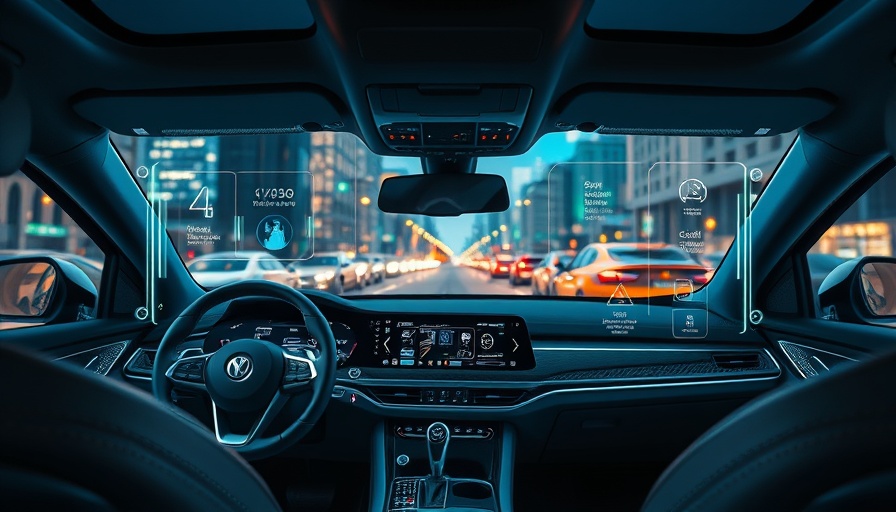
How AI Will Transform Self-Driving Technology
The evolution of artificial intelligence is driving a seismic shift in the automotive industry, especially in the realm of self-driving vehicles. As more companies invest in autonomous technology, the spotlight often shines solely on industry giants like Tesla. However, emergent players in the AI landscape, particularly those specializing in software and algorithms, are poised to gain significantly from this trend. Nvidia, renowned for its graphics processing units (GPUs), has a unique position to capitalize on the growing demand for smart, self-sufficient vehicles.
Why Nvidia Stands Out in the AI Vehicle Market
Nvidia's mastery in graphics processing is not limited to gaming; it extends meaningfully into the AI sector, making the company a frontrunner in self-driving technology. The company has developed deep learning algorithms that power data interpretation for vehicles on the road. This capability ensures that self-driving cars can efficiently process vast amounts of data to recognize obstacles, make decisions, and learn from their environments—all vital aspects for safe and reliable autonomous driving.
Historical Context: The Rise of AI in Automotive
The integration of AI in automotive applications is not new, but its rapid evolution has been remarkable. Historically, the need for automation arose from a combination of market demands for efficiency and safety. Companies such as Waymo and Tesla have paved the way by commercializing self-driving technology, yet, Nvidia's role as a critical supplier cannot be overlooked. It serves as a backbone for many self-driving solutions by providing the necessary hardware and software frameworks.
Counterarguments: The Challenge Ahead for Nvidia
While Nvidia's prospects appear strong, the race for dominance in self-driving AI technology is highly competitive. Companies like Google and Amazon are also advancing AI applications, and partnerships with automotive manufacturers may challenge Nvidia’s market positioning. Moreover, regulatory hurdles and public skepticism surrounding autonomous vehicles could slow down widespread adoption.
Looking Ahead: Future Predictions in AI & Self-Driving Vehicles
The future landscape of self-driving technology hinges on the ability of AI companies to innovate continuously. Experts predict that within the next five to ten years, AI capabilities integrated into vehicles will drastically enhance safety and user experience. Nvidia’s strong investments in AI chips and software may position it to dominate a rapidly evolving market, especially as more regulations support autonomous vehicle testing and deployment.
Actionable Insights for AI Enthusiasts
For AI lovers looking to engage with emerging technologies, monitoring Nvidia’s developments in AI and automotive applications will be essential. Engaging in communities focused on AI discussions can provide valuable insights and prepare enthusiasts for the trends shaping the future. Additionally, investing in education surrounding AI advancements may empower informed decision-making, whether in career paths or personal investments.
As AI continues to blur the lines between technology and transportation, understanding the critical players like Nvidia allows enthusiasts to stay ahead of the curve. By following these trends and actively participating in discussions around AI technologies, individuals can play a role in the broader conversation shaping our world.
 Add Row
Add Row  Add
Add 




 Add Row
Add Row  Add
Add 

Write A Comment